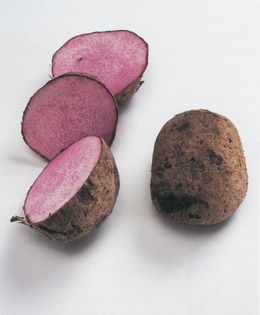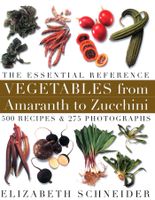Advertisement
Purple yam

Published 2001
Purple yam was labeled ube in a Philippine grocery, and both ratala and kand in an Indian one. It is not common in North America but is worth a detour for its startling color, deliciousness—and the surprising fact that it is the very same species (D. alata) as white yam. (What a maddening bunch!) The relatively small (½- to 1½-pound) squared, squat “buns” have thin bark-like skin that shows violet through its flaky patches. Cut, the raw flesh glows lavender-violet—and it turns a rich, mottled, deep red-violet when cooked. Peeled and boiled, the smooth, uniform flesh is almost juicy compared with that of other yams—as if crossed with a sweet rutabaga. Gently sweet, with a touch of smokiness, meatiness, and nuttiness—but really none of these—purple yam is its own curious, moist, fork-tender self.


